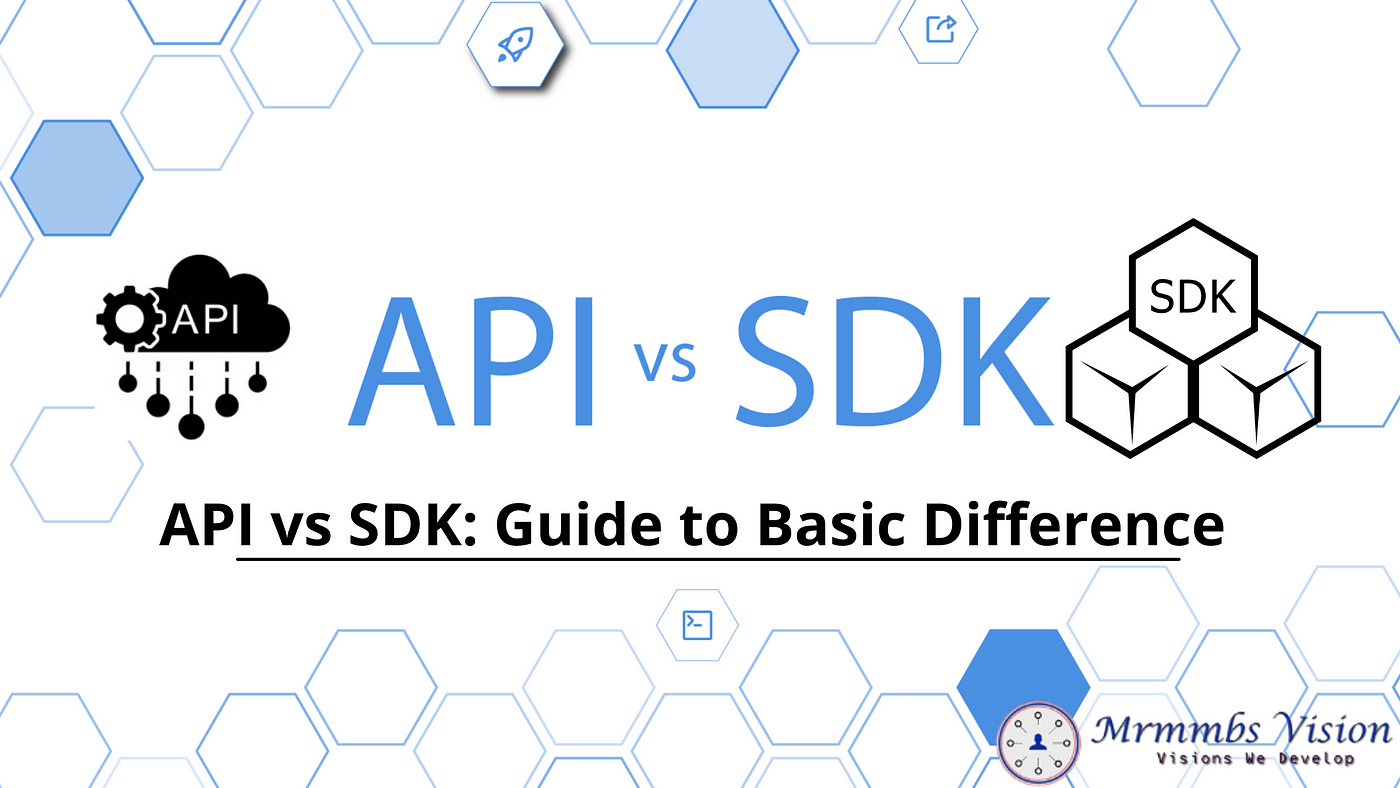In the modern software development arena, the ecosystem and landscape of a developer depend on a variety of tools that help connect them to different software and provide a seamless user experience. While creating or enhancing the functionality of the website and an app a developer uses different tools like APIs and SDK. These tools deliver the promise of improving both the in-house and back-end area of the development which overall contributes to the overall development of the process.

The guide provided by Mrmmbs Vision Pvt. Ltd. a Web Designing and Development Company in Delhi will help you provide an outline for the process of building your digital experience and understand how APIs and SDKs work, and differ from each other.
- Introduction
API: API is the abbreviation to Application Programming Interface. API is referred to as a set of protocols and tools used for building application software and allows the application to interact with an external service. It is a defined set of methods that allows developers to add different functionalities in the app and also helps increase the development process of an app.
SDK: SDK is the abbreviation to Software Development Kit also known as Devkit in the language of developers. SDK is a set of tools, guidelines, programs, and others like debuggers, compilers, and code libraries that help developers develop an app for a specific platform.
- Key Components
API: At present, there are two key components of an API: the first is an interface and the second is technical specifications. Interface refers to the pathway for accessing the APIs and technical specifications refer to the insights related to the API integration.
SDK: SDK has different components that help in the development of an application like debugger, compiler, documentation, testing, and analytic tools, etc. These key components when used effectively in the development process of an application result in developing an app that is responsive and high in performance.
- Types
API: API offers three types first, REST (Representational State Transfer) API deals in a client-server architecture, communication between the client and server, etc. Second, RPC (Remote Procedure Call) API helps execute codes on another system. Third, SOAP (Simple Object Access Protocol) API is used to enhance data privacy and security.
SDK: SDK offers several types like platform SDKs used for the development of an app for any platform, extension SDKs used to extend and customize the development process, analytics SDKs used to collect data, Monetization SDKs used to deploy ads, and others.
- Installation and Working
API: Setting up an API includes steps like installing the web app in the browser, connecting it to the internet, connecting it to API, connecting to the web server, and lastly fetching details from the database.
SDK: The working of an SDK includes Downloading and installing the kit, coding the space, and lastly testing and building the software application.
- Benefits
API: Working with API includes numerous benefits like integration, easy development, increased efficiency, and a higher possibility of personalization.
SDK: Just like API, SDK offers different benefits that can be taken into consideration while developing a site. The benefits provided are seamless integrations, shortcuts for development, in-built support, affordability, etc.

0 Comments
Post a Comment